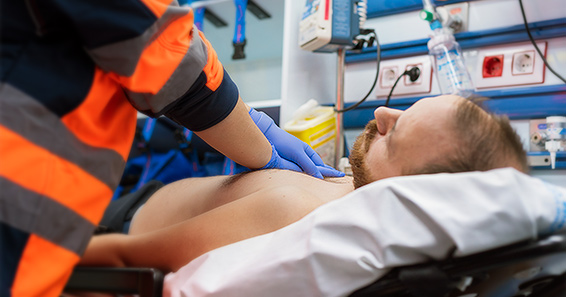Documenting Cardiac Arrests for Billing
Challenging Scenarios
We’re sure that you’ll agree with us that patient cardiac arrests present the most challenging of scenarios EMS providers encounter in the field. Documenting arrest scenarios also presents challenges following the run.
 Once we have had time to step back and think about the event, that’s when we pull all of our thoughts together to produce a detailed Patient Care Report (PCR) that adequately describes the scenario in full detail.
Once we have had time to step back and think about the event, that’s when we pull all of our thoughts together to produce a detailed Patient Care Report (PCR) that adequately describes the scenario in full detail.
For our specific purposes in this blog space, we will focus today on documentation suggestions to support the correct billing of the run for reimbursement while explaining why documentation detail is important for that purpose.
Data
Here in the billing office, we are often questioned about the tie-in and need for a written narrative versus the data driven pull down menus.
Cardiac arrest is one of those scenarios where data driven values are extremely useful when assessing effectiveness and outcomes, especially when later analyzing the run from a “stats” perspective. The data fields in the ePCR require you to add numerical values, patient statuses and equipment used which is also important information for the billing office.
The flow chart areas of the ePCR programs are especially useful when documenting arrests because they represent a fundamental time-line from arrival, throughout the resuscitation efforts and ultimately labels the conclusion of the scenario- specifically whether or not ROSC (Return of Spontaneous Circulation) was achieved in the field and transport of the patient to a facility was completed or the opposite as when ROSC cannot be attained and resuscitation efforts are ceased without transport.
Transport versus No Transport
This one issue is a significant item to be conveyed to your billing office—did you transport or not?
Medicare allows for billers to use a specific modifier to indicate when resuscitation efforts are ceased in the field and the patient is not transported. At this time, it’s the one scenario where Medicare allows for payment when the patient is not transported from the scene of the event.
Many other payer sources follow that model, as well.
Otherwise, if the patient is transported to an emergency facility, then of course the usual billing office needs call for you to correctly document trip origin, destination (if applicable) and number of loaded miles including odometer readings.
And…without saying…certainly be sure to obtain as much patient demographic information as possible as it is important to always properly identify your patient within the PCR.
The Scenario
Cardiac arrest documentation suggests the use of a timeline continuum in the PCR.
It’s important to report how the patient is found upon arrival. The BLS responder will certainly document their initial status check and the patient’s condition that led to their initiating CPR. The ALS provider will be documenting his/her skills and findings upon initial assessment that most likely will include a cardiac monitor strip to be appended either digitally or manually to the final PCR product showing both pre-resuscitation and post-resuscitation rhythms or cardiac rhythms upon delivery to a facility when transport is necessary.
Possibly an AED may have been used either by a bystander or other first responder. The provider preparing the PCR will be documenting recommended shocks or rhythms that either warranted or did not warrant a shock. The ALS provider will document shockable rhythms and the administration of manual defibrillation when necessary.
The written narrative becomes important to fill in the blanks between the pull-down menu data. You, as the provider, will be explaining the decisions you made and the skills and tools you used as part of your resuscitation efforts.
ALS Level 1 versus 2
Important to billing of arrests is the capture of specific skills to determine if the trip will be billed using the ALS 1 Emergency or ALS 2 procedure code.
Most likely, as your cardiac arrest scenario unfolds and the decision to “work the code” is made, the resulting bill after the arrest will be billed as an ALS 2 given the advanced skills used most frequently for arrest scenarios, but not always.
Ultimately, your documentation will determine that level of billing. So, you’ll be documenting if endotracheal intubation was part of the scenario or possibly your documentation will report manual defibrillation. An increasing number of arrest protocols now include intraosseous (IO) access for medication delivery which, when documented, allows for ALS 2 level billing.
Identify personnel
Finally, please remember it is important to properly identify all responders and personnel who were involved in the patient care loop of your cardiac arrest scenario in the PCR. Your billing office will review the certification levels of those who participated in the arrest scenario to definitively justify the billing of the appropriate level of service as defined by state and local EMS provider certifications.